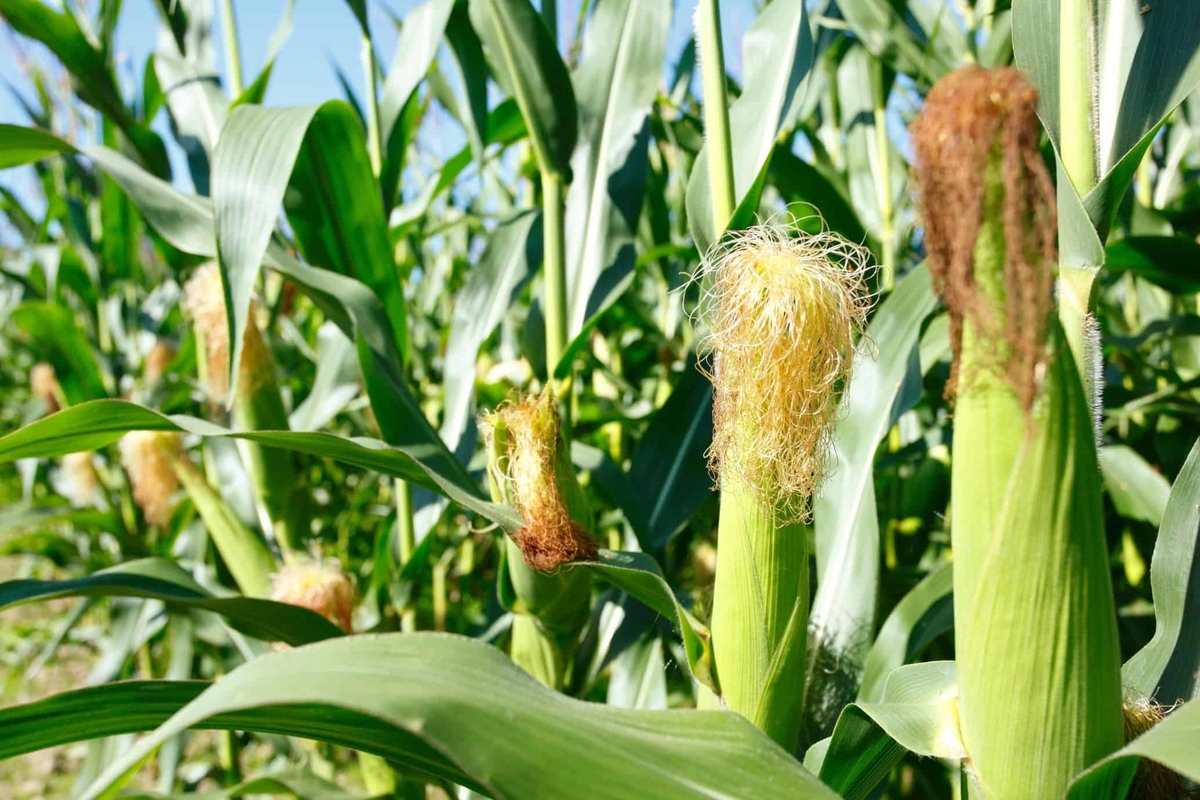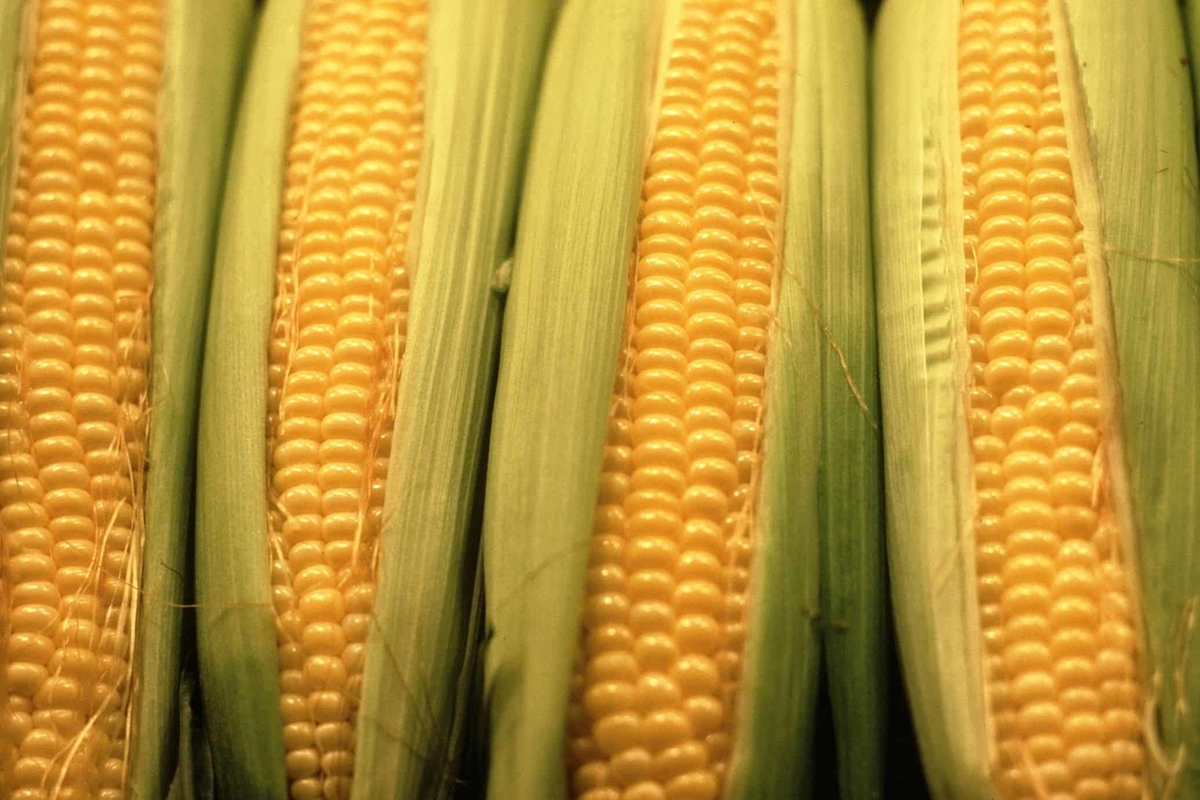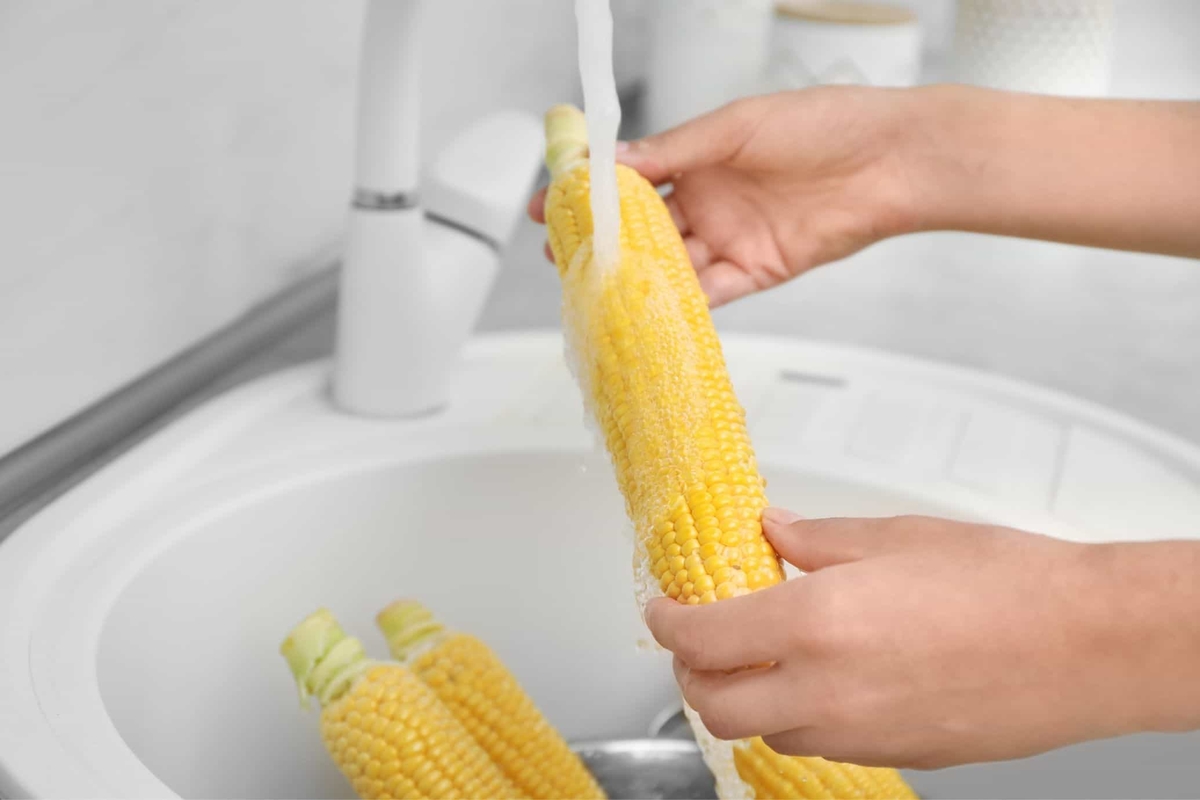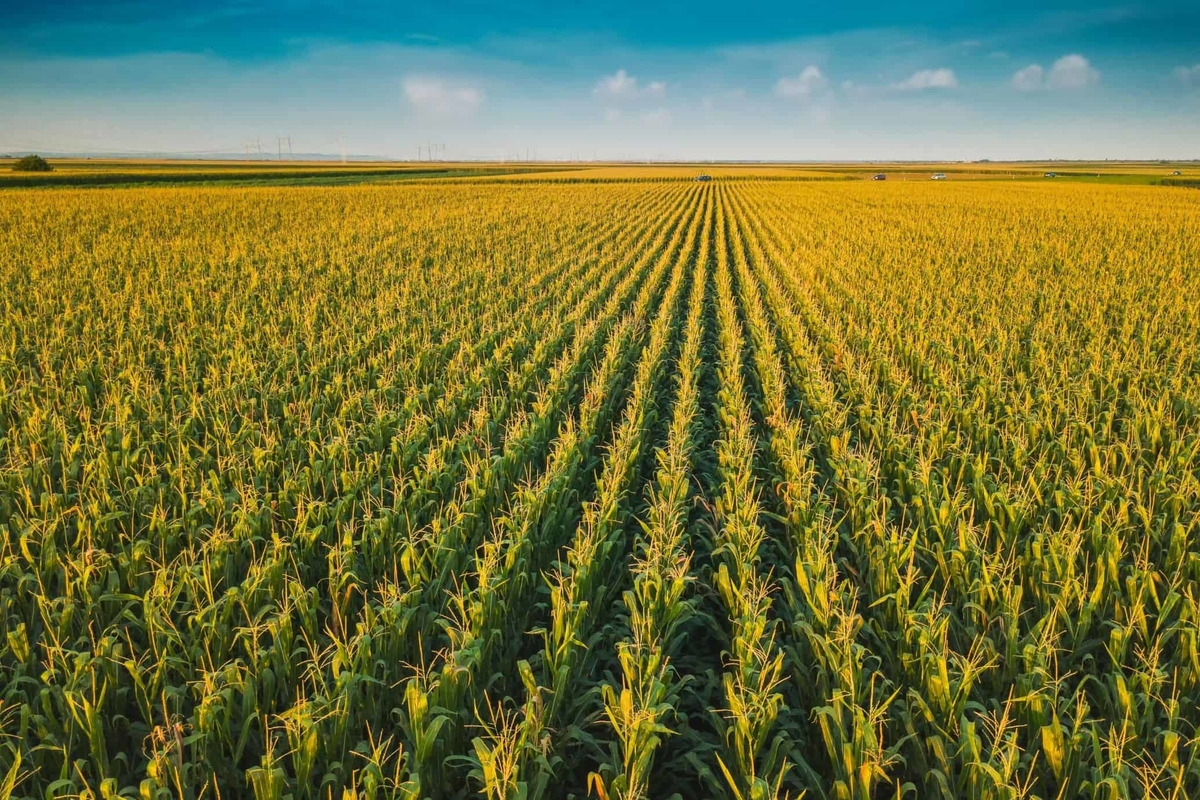How Much Corn is On an Ear?
It can seem frustrating to try a new recipe and not know how much of an ingredient to purchase at the store. Sometimes they call for "1 cup of corn kernels" or "the kernels from two ears of corn". That's a fine description if you are using frozen corn or fresh corn respectively, but otherwise, exactly how much corn is on an ear of corn? In order to help make cooking easier we did some experiments to help tell you exactly how much corn you need to buy.
To answer How many ears of corn kernels make a cup we went to the grocery store to check out the produce section. When talking about sweet corn, a small ear tends to measure less than 6.5 inches long and a large ear more than 7.5 inches. Therefore, a medium ear usually falls somewhere between 6.5 and 7.5 inches long and 2 inches across at the widest point. For our test samples we purchased medium ears of corn and headed home to the kitchen.
To answer the question How much corn is on an ear we removed the kernels from medium ears of fresh corn. While the yield of the corn kernels will obviously vary by the size of the cob, it was surprising to see a heavy 1/2 cup to a 3/4 cup result range within the "medium" size corn cobs. More often than not, our medium ears of corn produced 3/4 cup of kernels when cut from the cob.
So if your recipe calls for 2 ears of corn, you can now confidently know that it means about 1.5 cups of corn kernels. And "How many ears of corn do you need for 1 cup of corn kernels" is about 1 and a third ears of corn.
Did you know that corn is technically a grain, not a vegetable; it is a cereal crop that is part of the grass family. The ear is really part of the corn flower and each kernel is a seed. Corn will always have an even number of rows on each cob. Popcorn is a special type of corn grown that when heated it bursts into hot, fluffy kernels - yum! And corn is used to produce fuel alcohol which makes gasoline burn cleaner, reducing air and water pollution.

Now that you know how much corn is on an ear we hope this will take away some of the guesswork when trying to substitute fresh and frozen corn in your favorite recipes. You can also use our conversion tool below for any custom how many corn ears in a... measurements you need. If you de-corn a lot of ears by just using a knife you should definitely look into getting a good corn stripper to greatly speed up the process. I feel comfortable recommending the Kuhn Rikon Corn Zipper since it's inexpensive, easy to clean and I use it at home!
Custom Conversions for Ear of Corn
One Ear of Corn Equals
- There is ¾ Cup (177 mls) of Corn Kernels in a Ear of Corn
of
You need 1.4 Ears of Corn
Want a Fancy Cocktail?
What Is Corn
Is Corn a Fruit or Vegetable?
Since corn is a grain and grains are a type of fruit, technically, corn is a fruit (and a grain). Just like tomatoes and green peppers are also really fruits, in society, we typically eat corn as if it was a vegetable.
What Are the Types of Corn?
There are several common types of corn.
• Sweet corn - what we eat with a meal - high sugar content

• Field corn or dent corn - dried out and made into animal feed. Also used as a grain in making chips and corn tortillas - grow big, heavy ears - majority of commercially grown in the world
• Indian corn or flint corn - multicolored decorative corn. It's also dried and made into corn meal, polenta, etc.

• Popcorn - oldest domesticated type of corn. Range of colors. Harvested when ears are dry and kernels hard. Nebraska #1 producer in US.

• "Specialty" corns include many kinds such as heirloom varieties which are not mass-produced; and flour corn which has a soft texture making it easy to grind.
What Does Corn Look and Taste Like?
Corn on the cob has a slightly crunchy texture on the outside and a tender one on the inside. Taste-wise, you get a sweet mouthful of a soft buttery flavor.
When popped, basically all popcorn is a tender bite of white fluff that doesn't have a lot of taste to it. However, you can enhance your snacking experience by putting butter, salt, spices, cheeses, caramel, and many other fun flavors over the bowl of popcorn. You can also alter the taste of the popcorn by the way you pop it: air pop vs. pan with oil vs. others.
Both field corn and flint corn are processed before made into something edible.

What are Good Substitutes for Corn?
As a substitute for sweet corn in a recipe, you can use peas, sweet potato, or jicama.
For a cornmeal replacement, you can turn to corn grits, polenta, or ground oats.
If you are out of corn flour? You can use polenta flour instead.
How to Cut Corn from the Cob
Before you cut any corn, you should shuck the husk (this is the green leaves wrapped around the ear of corn) and remove silky strings. The closer to cooking time you can husk the corn, the fresher it will taste. Wash the corn on the cob under cool running water to remove any remaining dirt.
You can cut the corn kernels off the cob either pre- or post-cooked, however, it is much easier to handle while it is raw and cool to touch.
While holding on to one end of the ear of corn, place the other end in a bowl, on a cutting board or baking pan. Using a sharp kitchen knife, and slowly slice down the ear from the top to the bottom. The kernels will fall off the cob.
Rotate the ear of corn and repeat the same cutting action. Do this until you have removed all of the Kernels.

Can I Eat the Corn Husk or Should I Peel It First?
Before you eat any corn, you need to remove and discard the husk and silky strings. After the ears of corn are cleaned off, wash them under cool running water in the sink to remove and clinging dirt. It is best not to husk your corn until right before cooking it.
However, you can cook ears of corn with or without the husk removed. If boiling them in a pot of water, the husks are removed before the ears are submerged. Often when cooked on a grill, the husks are removed prior to grilling.
If cooking the corn in a campfire or roasted in an oven, the husks might be left on. However, it is a good idea to peel back the husk and remove the silky tufts, then reposition the husks back around the ear of corn.

How to Make Corn Juice
To make sweet corn juice, shuck the husk and silky tufts. Rinse the corn kernels in cool running water. With a sharp knife, remove the kernels by cutting down the ear of corn while holding it in a bowl or on a cutting board. Rotate the ear and continue slicing until all the corn is off.
Place the corn in your electric juicer and enjoy your resulting refreshing drink. Corn is often mixed with other fresh juiced ingredients.
How to Store Corn
You can store unhusked sweet corn in the refrigerator for about 2 days without putting them in a plastic bag.
If the ears of corn are already husked, wrap them loosely in a plastic bag and store in the refrigerator for no more than 2 days.
Once corn is cooked, you can store it in the refrigerator either on or off the cob, in an airtight container, plastic bag, or tightly wrapped in plastic wrap. The cooked corn should last for 3 to 5 days when stored properly in the refrigerator.

Can I freeze fresh corn on the cob?
If you will not be eating the ears of corn within about 3 or 4 days, you might consider freezing the ears of corn to help retain its freshness. Before freezing, shuck the husks and remove the silky strings. Rinse the ears under cool running water.
Blanch the corn on the cob in boiling water for about 4 minutes followed by placing them into an ice bath to stop the cooking action. Place the ears in a single layer in a food quality Ziploc-type bag and put them into the freezer until needed.

How to Store Ear of Corn
General How to Store Corn Info
The sooner you use corn after picking, the sweeter it's going to taste. Corn's natural sugar turns to starch at an astonishing rate. Refrigerate corn immediately; do not leave corn sitting on the kitchen counter as the sugar turns to starch even faster during the heat of the day. However, corn is sensitive to chill-injury and should be placed in the front of the refrigerator where the temperatures tend to be higher.
Short Term Corn Storage
If storing, wrap the unshucked corn in a wet paper bag to slow down the conversion from sugar to starch. Place the wet paper bag in an old plastic shopping bag and refrigerate. Corn will hold for 5 to 10 days.
Cooked corn kernels will keep for 2 to 3 days in the refrigerator.
Corn Long Term Storage
Freezing: Remove husks and silk. Timing from the point when the water returns to the boil, blanch 4 minutes for small ears, 6 minutes for medium ears, and 8 minutes for large ears. Immediately cool in ice water for the same length of time as it was blanched. Drain; pack whole in bags. You can also blanch, drain, cut off kernels, and freeze in freezer boxes. Frozen corn will last up to a year.
Canning: Corn cans well, but because it is a low acid vegetable, it's essential to process it for an adequate length of time. See a good preserving book for instructions.
Corn Side Notes
When possible, purchase corn with the husks still on; the convenience of shucked corn is not usually enough to offset the loss of quality.
Ear of Corn Recipes
Spicy Street Sous Vide Corn Recipe
 This dish hinges on using the sweetest fresh corn and sous viding it. The sweetness of corn combined with the kick of ancho pepper powder with some sourness from feta cheese and lime zest makes for an amazing between-meals snack. Corn can vary widely in its tenderness, so it's often best to try a kernel raw before cooking it. This will give you an idea of how sweet and tender it already is and can inform your cooking time.
This dish hinges on using the sweetest fresh corn and sous viding it. The sweetness of corn combined with the kick of ancho pepper powder with some sourness from feta cheese and lime zest makes for an amazing between-meals snack. Corn can vary widely in its tenderness, so it's often best to try a kernel raw before cooking it. This will give you an idea of how sweet and tender it already is and can inform your cooking time.
Sous Vide Corn on the Cobb with Basil Recipe
 Sous viding sweet summer corn is one of my favorite methods to prepare it. Because it only needs a little heat to break down the outer layers of the kernels the cook time is pretty short, only about 15 to 25 minutes. This recipe cooks the corn with butter then finishes it with fresh basil and lime zest.
Sous viding sweet summer corn is one of my favorite methods to prepare it. Because it only needs a little heat to break down the outer layers of the kernels the cook time is pretty short, only about 15 to 25 minutes. This recipe cooks the corn with butter then finishes it with fresh basil and lime zest.
Looking for Something a Little Different?
Popular Vegetable Conversions
How Many Bananas in a CupHow Much is a Bunch of Sage
How Much Juice in a Lime
How Much is a Bunch of Thyme
Volume of an Egg
How Much Corn is on an Ear
How Many Bread Crumbs in a Slice of Bread
How Much Is A Bunch Of Cilantro
How Much Is In A Bunch Of Basil
How Much Shredded, Sliced, Or Chopped Is In A Carrot
How Much Is A Pound Of Cheese Cubed Or Shredded
What is the Produce Converter?
One of the biggest hassles when cooking and working in the kitchen is when a recipe calls for "the juice of 1 lime" or a similar measurement. Often times when cooking people use bottled juices, pre-sliced vegetables and other convenient cooking time savers. Produce Converter will help you convert the "juice of 1 lime" and other similar recipe instructions into tablespoons, cups and other concrete measurements.
Produce Converter can also be used to figure out how many vegetables to buy when you need, for instance, "A cup of diced onion." You can use our easy conversion tool to figure out exactly how many onions you need to buy at the store in order to end up with the amount you need for your cooking.
We hope you enjoy Produce Converter and if you have any suggestions for how we can improve it and make your cooking easier please let us know.








